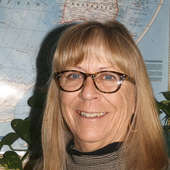- Research tips and McCook Brick Company- solid as a brick (12/16/24)
- Big Give appreciation and some railroad characters (11/15/24)
- George Randel becomes a landowner, gets married, and takes in a Buffalo Bill show (9/20/24)
- The memoirs of George F. Randel, early settler of Red Willow County (9/12/24)
- Vietnam War Memorial honors Nebraskans who served (6/13/24)
- McCook business promotions - just prior to 1893 stock market crash (5/30/24)
- Shall we dance? Meet you at the Gayway (12/8/23)
Taking care of the poor in the 1800s
Friday, December 2, 2016

Social Security did not exist until 1935 and it was a 30 year break before Medicare and Medicaid were signed into law by President Lyndon Johnson in 1965. The State Department of Public Welfare was created in Nebraska in 1919. Prior to those enactments, it fell to the states and counties to care for the poor (paupers) of their region.
Red Willow County records indicate that medical needs as well as heating homes, feeding paupers and providing them with general needs was a good part of the county budget during those years.
As far as medical needs were concerned, the Republican Valley Medical society, comprised of physicians in the area, apparently set down schedules of fees to be charged to patients. According to a news article following the workings of the Red Willow County commissioners in 1891, the county then had the authority to determine how much of the normal fee they were willing to pay in order to provide care to paupers.
"Resolved that from and after this date no claim of any druggist, merchant or physician for supplies furnished any pauper will be allowed and paid by the board of county commissioners unless same is certified to by the justices of any precinct in which said pauper resides. That said person is a pauper and a county charge and wholly unable to provide for themselves. That the goods or service were rendered by the order of the said justices of the peace. Physicians will only be allowed two-thirds of the regular fees adopted by the Republican Valley Medical society. The law requires that where there are two justices in the precinct that both must sign the certificate." (McCook Tribune, March 20, 1891)
Genealogical research can be done on the welfare of an ancestor simply by following the board minutes from the county meetings, most of which were published in the local papers for everyone to see. There was no privacy concerns about who was receiving aid from the county in those days and no doubt should the records still exist, there would be copies of the hearings concerning each individuals request for assistance.
As an example from the May 1, 1891 McCook Tribune came the following list of payments: Doctor J. E. Hathorn for attending to paupers; Mrs. McCulloch, P. Bieckham, Mrs. Bryant, $ 1.50, $ 10.12, and $ 2.25. L. W. McConnell & Co., druggist, for providing medicine to paupers; Helen Johnson, A. F. Meyers, a. Reischick, W. W. Gerver, Charles Preaber, $ .50, $ 7.75, $ .85, $ 2.40, $ .35. (While this may seem small amounts, remember one dollar in 1891 value is approximately $25 today)
Additionally, the county picked up the cost for other items such as providing heating coal to certified poor and merchants like Frees & Hocknell or Huddleston Company had claims paid for $47.30 and $18.80 during the same period. S. H. Colvin was paid by the county for house rent of $ 4.00 for a Purdy living there. Not listed during that month were any burials which were also paid for by the county.
If you add the payments from that one month in 1891 and covert them to today's dollars, Red Willow County paid approximately $ 6,600 in aid to the poor during that 30 day period. Considering that the population was approximately half of what it is today, one could easily surmise that number would be double or more even if today's standards required certification of need by the court, which of course, it does not.
Southwest Nebraska Genealogy Society's annual Christmas Party and Open House will be this Saturday, Dec. 3, at our library 110 West C Street, Suite M-3, starting at 1:30 PM. The public is encouraged to attend.

